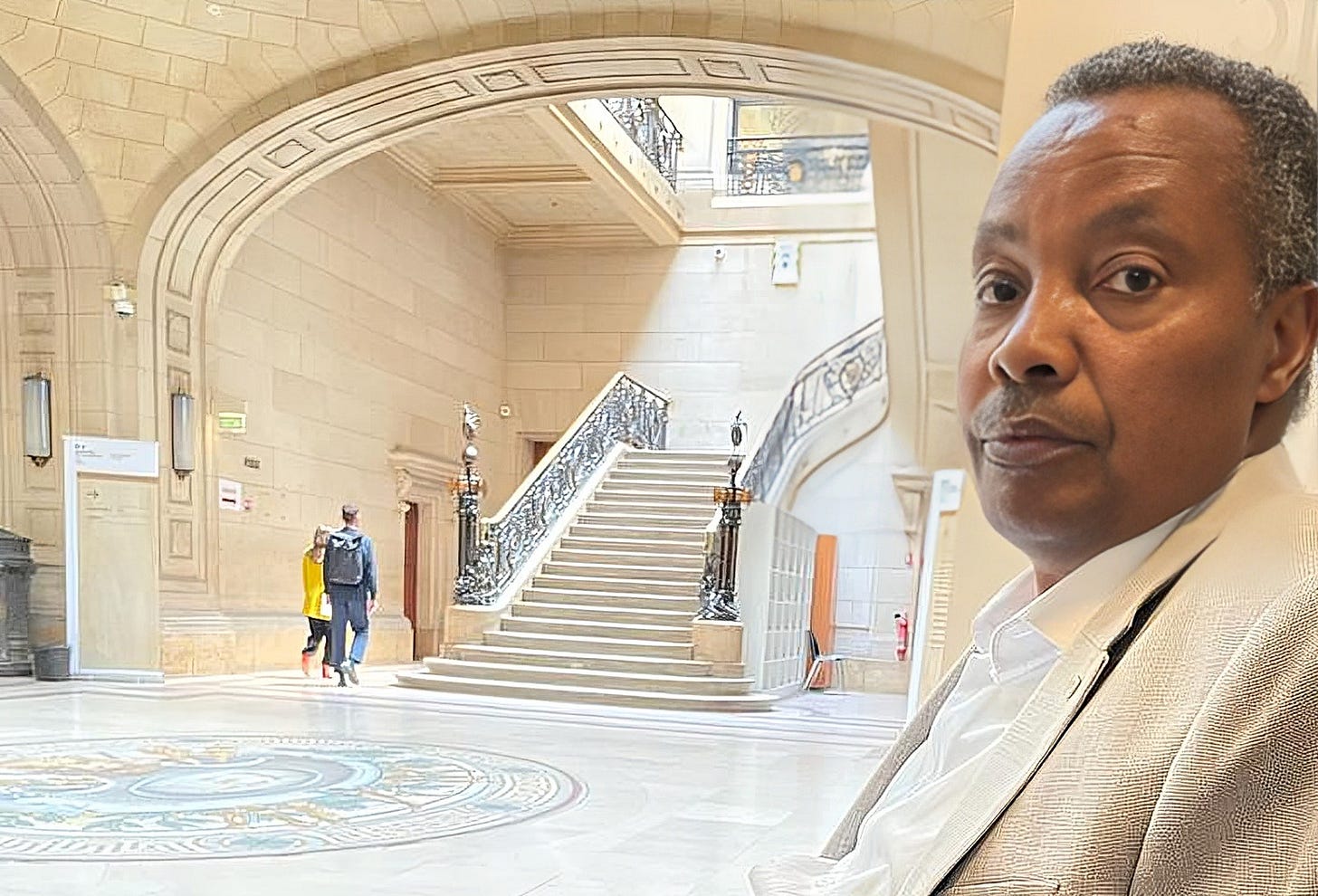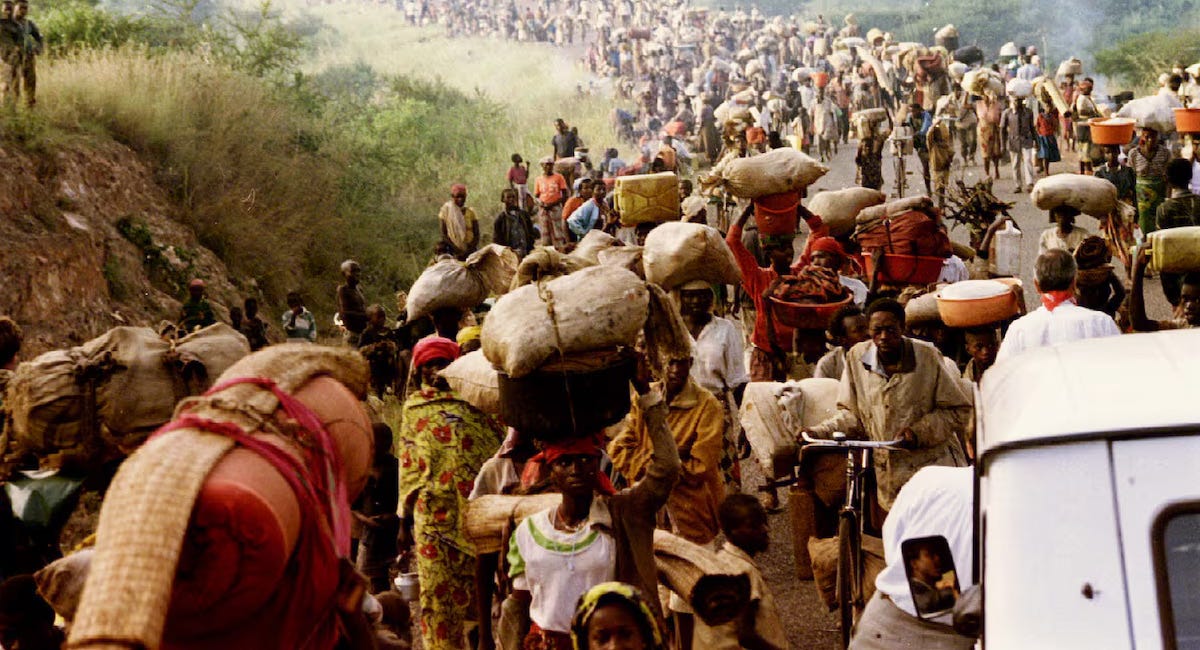As a survivor and a legal professional, François-Xavier Nsanzuwera, documents the atrocities of the Tutsi Genocide through his work and writings. In his own words, he tells us his story of resilience in the pursuit of justice and healing, 30 years after the horrific tragedy.
Who am I? My life has been tumultuous that I struggle to define myself. But I have been fortunate despite the moral wounds that will never heal.
My name is François-Xavier Nsanzuwera. I grew up in the Bugesera region, where the Tutsi population was systematically exterminated on a large scale in April 1994. This region had the highest concentration of Tutsis.
My father, Ignace Nyagahigi, a catechist in the Ntarama church, which has now become a genocide memorial, was killed in April 1994. His remains were thrown into the Akanyaru River. My 93-year-old grandfather, Paul Bitariho, was killed by a childhood friend who was a neighbour of my parents.
I waited more than 20 years to speak about this. I don't know if I have truly forgiven. I have certainly tried. But I have always been fascinated by justice, human rights, and kindness. So, what makes me any particular as this witness so burdened with these memories?
Privileged Witness
“La Rage de Vivre (Editions Michalon, Paris) tells the story of Martin, the sole survivor of his family who survived thanks to his Hutu friend who took the risk of hiding him.”
At the end of my law studies, I chose to work in the judiciary, even though the heads of the corps were non-jurists. When the civil war began in October 1990, the security services arbitrarily arrested over 8,000 people, mostly Tutsis, whom the government regarded as accomplices to the RPF rebellion.
Between 1991 and 1993, Tutsis and also Hutus, mainly from the southern part of the country, were persecuted and killed. As the Prosecutor of the Republic, I am a privileged witness to the political violence carried out by the State. And what I have been privy to, I decided to consign in a series of books.
In 1993, I published La magistrature rwandaise dans l'étau du pouvoir exécutif, which was my account of how the Rwandan judiciary was in the grip of the Executive Power. It wasn’t strictly about the Genocide.
La Battante, Renaître après le génocide des Tutsis was the first book I wrote which took a close look at the tragedy. In this book published in 2018, I pay tribute to the resilience of the survivors of the Tutsi genocide.
I have since been back to my writing desk, and the result is La Rage de Vivre, out this year to mark the thirty years since the events. Then, there is Briseurs de Destins, les Cerveaux du génocide des Tutsis.
La Rage de Vivre (Editions Michalon, Paris) tells the story of Martin, the sole survivor of his family who survived thanks to his Hutu friend who took the risk of hiding him. After he escapes his hunters, he manages to reach the Sainte-Famille church in the Rwandan capital and is later evacuated to Kabuga, an area controlled by the RPF fighters in June 1994.
Martin now lives in Belgium. And although exile has presented him with a set of other trials—racism, and intolerance—Martin says the journey, which he has travelled, has enable him to set himself up for a new start and to forgive.
In Briseurs de Destins, Les Cerveaux du génocide, I make a strong case that between April and July 1994, more than a million Rwandans—around 12% of the population, the vast majority of them Tutsis—were exterminated by members of the army, the gendarmerie, the Interahamwe militia, and even their neighbours.
In their attempt to explain the murderous effectiveness of this fourth genocide of the 20th century, too many Western commentators fall back by default onto the stereotypes of "African tribal savagery."
They wouldn’t attribute it to a regime driven by what the great French historian Jean-Pierre Chrétien rightly described as "Tropical Nazism".
The mysterious attack on President Juvénal Habyarimana's plane on the evening of 6 April 1994, blamed on the Tutsis without the slightest proof, was used to justify an alleged "spontaneous popular anger" that was massive and uncontrollable.
However, this narrative has proved to be fallacious—the attack was not the cause of the genocide. The "crime of crimes" was the culmination of a racist ideology fuelled, since Rwanda's independence, by a Hutu political and military mafia determined to monopolise power at any cost.
While "ordinary" men and women participated in the genocide of the Tutsis and the simultaneous extermination of democratic Hutus, those who bear the greatest responsibility include those who gave orders in the corridors of power and those who were active at the scenes of the crimes.
My book sheds light on the personalities and paths of twelve of them, convicted by international justice after meticulously documented investigations and fair trials. I personally know the majority of them.
Labour of Forgiveness
“Gacaca courts aimed to promote healing and reconciliation by encouraging perpetrators to confess their crimes, apologise, and seek forgiveness from the survivors and the community.”

Today, I am at work on another book to discuss forgiveness, the population's involvement in resolving the genocide's disputes, the victims' role in reconciliation and the country's reconstruction.
Faced with an overwhelming number of alleged perpetrators of the genocide, the Rwandan government had to find alternative ways to deliver justice to the victims because ordinary courts were incapable of resolving the genocide's disputes.
The most optimistic estimates suggested that it would take a century to try all the alleged perpetrators. To address this challenge, Rwanda implemented a community-based justice system called Gacaca, which means "grass" in Kinyarwanda.
Gacaca courts were established to try lower-level participants in the genocide, promoting truth-telling, reconciliation, and accountability at the local level. These courts operated from 2001 to 2012 and were designed to complement the work of the national courts, which focused on high-level perpetrators.
Gacaca courts aimed to promote healing and reconciliation by encouraging perpetrators to confess their crimes, apologise, and seek forgiveness from the survivors and the community.
The process involved open hearings where witnesses and survivors shared their testimonies, and the accused had the opportunity to respond.
The courts consisted of elected judges from the local community, who received training and guidance to ensure a fair and transparent process.
While Gacaca courts faced challenges, including limited resources, potential manipulation, and the re-traumatisation of survivors, they played a crucial role in addressing the overwhelming number of cases and facilitating community dialogue.
They also allowed survivors to learn the truth about the fate of their loved ones and provided an opportunity for perpetrators to take responsibility for their actions.
But Rwanda's approach to justice and reconciliation after the genocide has been multifaceted.
In addition to the Gacaca courts, the country has also used traditional dispute resolution mechanisms, such as mediation and reconciliation ceremonies, known as ubudehe. These initiatives aimed to rebuild trust, foster unity, and promote social cohesion.
It's important to note that the process of justice and reconciliation is complex and ongoing.
Rwanda's journey towards healing and rebuilding society continues to this day, with efforts focused on education, commemoration, and fostering a shared national identity that transcends ethnic divisions.
As a survivor and a legal professional, I am deeply committed to promoting justice, human rights, and reconciliation. Through my work and writings, I strive to shed light on the atrocities of the genocide, honour the resilience of the survivors, and contribute to the collective efforts of healing and rebuilding in Rwanda.
The Rwandan Genocide 30 Years On, My Haunting Survivor’s Remorse
No, my recent memoir—Candid Intent—doesn't dwell on the horrors I witnessed in Rwanda 30 years ago. It explores the Iraq War, but the brutality of Operation Iraqi Freedom reawakened memories of our own tragedy. The following are excerpts from Candid Intent





